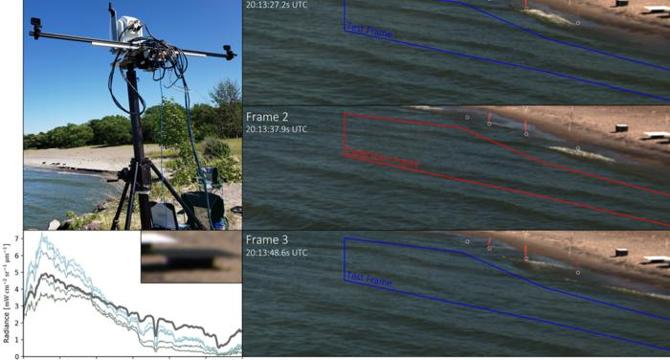Bioengineer
2w
194

Image Credit: Bioengineer
Revolutionary Bimodal Imaging Platform Forecasts Hyperspectral Frames from Standard RGB Video
- Researchers at the Rochester Institute of Technology have developed a bimodal imaging platform integrating hyperspectral imaging with RGB video technology.
- The platform aims to enhance monitoring and analysis of dynamic natural water scenes by combining high-cost hyperspectral technology with more accessible RGB video technology.
- Hyperspectral imaging allows for precise material analysis based on spectral signatures and finds applications in Earth remote sensing for various properties like soil moisture, water quality, and biomass estimation.
- The bimodal platform showcased in the research successfully predicts hyperspectral frames from traditional RGB video data, showing potential in visible wavelength accuracy.
- However, challenges arise in predicting hyperspectral data accurately in the near-infrared range due to limitations of spectral data in RGB videos, particularly in shallow water conditions.
- Future advancements include aligning spectrometer and camera fields for greater precision and developing more sophisticated prediction models for improved accuracy in environmental monitoring.
- Integrating cost-effective RGB cameras with hyperspectral technology offers possibilities for broader applications in environmental monitoring, water quality assessment, and vegetation analysis.
- This innovative platform signifies a significant step forward in remote sensing technology, showcasing the potential for synergistic applications and transformative insights in environmental monitoring.
- As environmental management increasingly relies on data-driven decision-making, bimodal imaging platforms like this one hold promise for more efficient and cost-effective monitoring solutions.
- Overall, the integration of hyperspectral and RGB technologies presents an exciting frontier in environmental research, offering new perspectives and advanced tools for understanding complex environmental dynamics.
Read Full Article
11 Likes
For uninterrupted reading, download the app